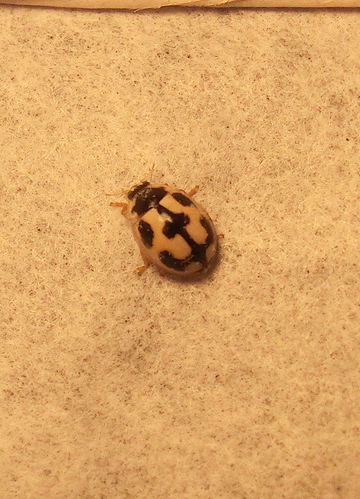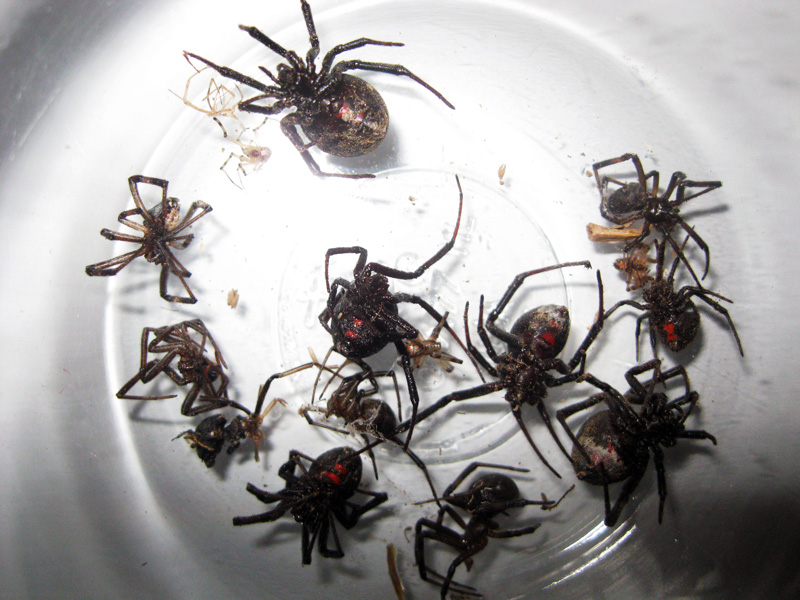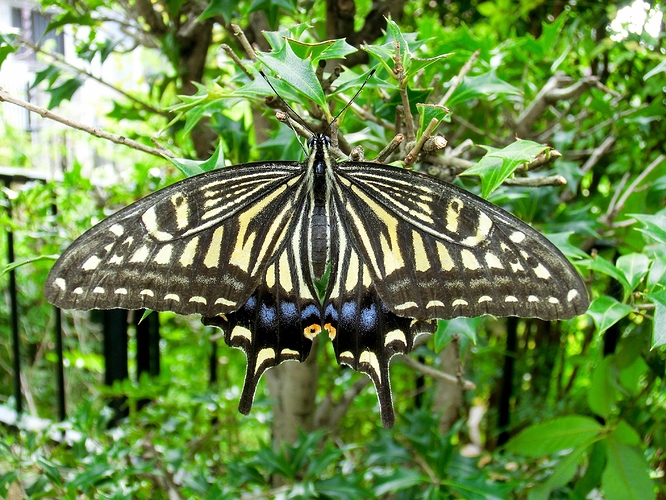That’s a katydid, which is a relative of the grasshopper (more closely related to crickets though if I’m not mistaken). One of the easiest ways to tell the difference is the super long antennae, which grasshoppers do not possess.
This shows me I shouldn’t try using English vernacular names: I always assumed the Frecnh “sauterelle” (“hopper”, basically) accounted for the English “grasshopper”, while you are teaching me they don’t. Katydid is such a strange word, where does it come from?
I’ll stick to Latin names! This was a Tettigonia nymph, although I am unsure of the precise species.
… and while I am at it, you should read “ceiling” when I type “roof”… sigh
It’s pretty much just the US that calls them Katydids, I think. Somebody else can correct me if I’m wrong, but I believe they’re called bush crickets in the UK. Also, I think “Katydid” is an onomatopoeia.
I was expecting some more exotic origin, but an onomatopoeia is pretty funny too!
Here is another Japanese jumping spider, a male Evarcha albaria. Very nice fashion sense.
I hate those bastards. Village came in and wiped out damn near half the trees lining streets about two years back. The borer had infested the whole town, killing many of the trees.
There are liquid treatments you can put on trees to help them resist the ash borer. Get at the lawn supply store, and pour over the roots. Trust me, if you have an ash tree look into doing this.
I got back to Japan a few days ago and was greeted by the nightmarish cacophony of the Aburazemi (“Oil Cicada”).
I think they are called that way because this charmant fellow pees some sort of liquid (better not know what it is…) when it takes off.
Those insects are very dependant on the heat, and with the generation lag, you get more or less noisy summers in the place they are mating. This year’s summer is pretty apocalyptic on that front, despite it being rainy.
For some reason, the dominating Cicada species seems to vary from town to town. In Kyoto, which is just next door, the Kumazemi (“Bear Cicada”) are all the craze (and very noisy as well).
The oil cicada is going extinct in some areas, which is a concern. They are thriving where I live, though!
I decided to clear out the local spiders around a new rental. This was in New Mexico. I think I found 20 mature females from a single walk around the home.
Are they black widows?!
Since they are dead females Black Widower would be more accurate ;)
So is that normal finding that many? What if you’d not done a sweep? Would the place have been ‘safe’ or is that kind of thing necessary? I’m kind of fascinated and horrified!
Yeesh. I love spiders, but I prefer to keep the dangerous ones at a distance. Of course, this goes to highlight how much of an overreaction to these guys most people have; all of these deadly spiders and no dead humans. Why? Because spiders aren’t evil and out to kill us. Well, except for wolf spiders - those guys are @$$holes, but thankfully not dangerous.
My wife and I have a deal. I deal with the spiders, and she doesn’t kill them.
Of course the reason I have to deal with them is she’s to chicken to kill them.
To the spiders deposited on my porch: You’re welcome.
Yep, black widows. That house was particularly infested. Tons of egg sacs (empty and otherwise) too. They’re actually very non-aggressive unless provoked but I was still glad I found them before my kids did! I found a ton on/in the electrical box so maybe I kept the electrician from getting a bite. The freaky part for me is their unique web “crinkliness”; very easy to know when you’ve walked into a black widow web!
Craig, I’ve heard that indoor spiders placed outdoors die pretty quickly. Not sure how true that is. I have a similar non-aggression pact with my wife - I love having “good” spiders around to eat bad stuff so I always try to rescue them. i.e. put them in another room, heehee.
I finally convinced my wife that we need to leave the house centipedes alone. They are voracious predators of invertebrate house vermin.
I’ve found that spiders are pretty restricted by environment, although “indoor” spiders will normally be able to find a new abode (or reach their old one) in most circumstances. Reminds me of a story from many moons back …
When I was little, a family came from Vietnam (evacuated just ahead of the troops) and my family went to greet them. Apparently stuffed away in their bags and gear, a funnel web spider had hitched a ride and set up shop in the bushes by their driveway. One of their kids shared my interest in arachnids, although neither of us knew what we were dealing with. We watched a grasshopper wander just a little too close, and this seemingly huge spider suddenly launched out of its “cave,” tore the grasshopper almost in half with one swipe, and then dragged it back inside.
After the moment of surprise, we both went running into his home sputtering nonsense about a monster spider. My parents just shrugged it off as two kids being goofy, but his father knew better and told us to keep clear. He poked his head out the door to see the web, and then quickly asked about who to get in touch with regarding dangerous spiders. Someone from a local university was there within 30 minutes, and he gave an impromptu lesson on arachnids from around the world, explaining that this poor spider would have likely died with the next frost if he didn’t take it away.
Plus antivenoms. We have a couple of potentially lethal spiders here but no recorded deaths from bites since 1979.
But yeah. :) They just want to get on with their lives like any other animal, and the majority of aggression is defensive. Also many bites are venomless, it’s expensive to make and spiders prefer to use it for the intended purpose of killing prey.
That’s the first time somebody calls me an invertebrate house vermin, besides my wife.
This calls a question: what sort of creature do those little spiders prey on, to necessitate such a potent weapon? venom-resistant cockroaches? Is there a natural equivalent in Australia of the arms race?
And for something different:
The largest indigenous butterfly Edit:Papilio xuthus, since I didn’t take time to rename the image. Took time to chase that one!
I once saw an epic fight between its larva and an hornet: they fell from a tree right in front of us while we were having a snack. They fought it out on the floor, until the wasp gave up exhausted and barely made it out while the great equalizer, the ants, proceeded to finish and clean up the job.
Well usually venom is not a single thing, it’s a cocktail of toxins that have different targets. Redback/widow toxin has one part that targets vertebrates, and other parts that target insects. Probably the vertebrate toxin evolved as a defense mechanism against things that try to eat the spider.
Mental note: Never move to New Mexico.




